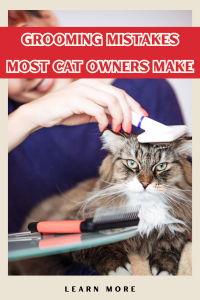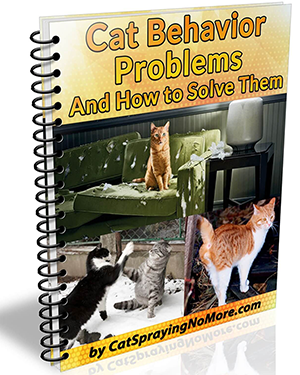Grooming Mistakes Most Cat Owners Make

Cats are often perceived as self-sufficient grooming experts, meticulously cleaning themselves with their barbed tongues and nimble paws. This innate fastidiousness can sometimes lull cat owners into a false sense of security, leading them to believe that their feline companions require minimal, if any, human intervention in their grooming routine. However, this is a common misconception that can lead to a host of problems, from painful matting and skin irritations to behavioral issues.
While a cat’s self-grooming is impressive, it’s not always sufficient, especially for indoor cats, long-haired breeds, seniors, or those with health conditions. Recognizing and avoiding common grooming mistakes can make a world of difference in your cat’s comfort, health, and overall well-being. Let’s delve into the grooming missteps most cat owners make and how to avoid them.
1. Neglecting Regular Brushing (or Brushing Incorrectly)
This is arguably the most pervasive grooming mistake. Many owners underestimate the importance of regular brushing, assuming their cat’s self-grooming is enough.
- The Mistake: Not brushing often enough, especially for long-haired cats or heavy shedder breeds. Using the wrong type of brush, or brushing too harshly.
- The Impact: Leads to excessive shedding throughout the home, increased hairball formation (which can cause digestive blockages), and the development of painful mats and tangles. Harsh brushing can cause “brush burn” or skin irritation.
- The Solution: Establish a consistent brushing routine. For short-haired cats, 2-3 times a week may suffice. Long-haired cats often need daily brushing. Invest in appropriate tools: a de-shedding tool (like a Furminator for heavy shedders, used cautiously), a slicker brush, and a wide-toothed comb. Brush gently, always in the direction of hair growth, and pay extra attention to areas prone to matting like armpits, behind ears, and the belly.
2. Ignoring Matting (or Trying to Cut Them Out Incorrectly)
Mats are a serious problem that many owners either overlook or try to fix dangerously.
- The Mistake: Allowing small tangles to progress into large, dense mats. Attempting to cut out mats with scissors, which often results in accidentally cutting the cat’s skin.
- The Impact: Mats are incredibly painful, pulling on the skin and restricting movement. They can hide skin infections, parasites, and even impede blood flow. Cutting them out with household scissors is extremely risky due to how thin and mobile a cat’s skin is.
- The Solution: Prevention through regular brushing is key. If you find a small, loose mat, try to gently work it out with your fingers and a comb, starting from the edges. For larger, tighter, or skin-bound mats, do not attempt to cut them out yourself. This is a job for a professional groomer or veterinarian who can safely shave them off.
3. Improper Nail Trimming (or Skipping It Entirely)
Many owners fear trimming their cat’s nails, leading to overgrown claws.
- The Mistake: Not trimming nails at all, or cutting too much and hitting the “quick” (the blood vessel and nerve within the nail).
- The Impact: Overgrown nails can curve into the paw pads, causing excruciating pain, infection, and lameness. They can also snag on carpets and furniture, leading to broken claws or injuries. Hitting the quick causes pain and bleeding, making future trims terrifying for the cat.
- The Solution: Start young and make it a positive experience with treats. Use sharp, cat-specific nail clippers. Only snip the clear, pointed tip of the nail, avoiding the pink quick. If your cat has dark nails where the quick isn’t visible, trim only the very tip. Have styptic powder (or cornstarch/flour) on hand to stop bleeding if you accidentally cut too deep. If unsure, ask your vet or a groomer for a demonstration.
4. Infrequent or Incorrect Bathing
While most cats rarely need baths, some situations call for one, and owners often get it wrong.
- The Mistake: Bathing a cat too frequently (drying out skin/coat) or using human shampoos/soaps. Not preparing properly, leading to a stressful and dangerous experience for the cat.
- The Impact: Frequent bathing can strip essential oils from a cat’s skin and coat, leading to dryness, flakiness, and irritation. Human shampoos are formulated for a different pH balance and can cause skin problems. A chaotic bath experience can traumatize a cat, making future necessary baths impossible.
- The Solution: Only bathe when truly necessary (e.g., covered in something toxic/sticky, severe matting, veterinarian-prescribed medicated baths). Always use a cat-specific shampoo. Prepare everything beforehand: lukewarm water, rubber mat for traction, towels, cotton balls for ears, and treats. Keep the experience calm and quiet. Rinse thoroughly to prevent skin irritation from residue.
5. Neglecting Dental Care
While not strictly “coat” grooming, dental health is a critical part of overall grooming and is frequently overlooked.
- The Mistake: Assuming dry kibble cleans teeth, or ignoring bad breath as “normal cat breath.”
- The Impact: Dental disease (plaque, tartar, gingivitis, periodontal disease) is rampant in cats, causing pain, difficulty eating, and can lead to serious systemic health issues if bacteria from the mouth enter the bloodstream. Bad breath is a sign of infection, not just bad hygiene.
- The Solution: Start a home dental care routine with a cat-specific toothbrush and toothpaste (never human toothpaste!). Aim for daily brushing if possible. Provide dental treats or chew toys approved by your vet. Schedule regular professional dental cleanings at your vet’s office as recommended.
6. Ignoring Stress Signals During Grooming
Cats communicate discomfort, but owners often miss the cues.
- The Mistake: Pushing through when a cat is hissing, growling, swatting, or trying to escape.
- The Impact: Forcing grooming creates negative associations, leading to a cat that actively resists and becomes more aggressive during future attempts. It damages the bond of trust.
- The Solution: Pay attention to your cat’s body language. If they show signs of stress (tail flicking, flattened ears, dilated pupils, tense body, vocalization), stop the session. Keep sessions short and positive, ending before they get stressed. Break down grooming tasks into smaller steps and reward calm behavior with treats and praise.
7. Forgetting the Dewclaws
The dewclaw is often overlooked, leading to painful issues.
- The Mistake: Remembering to trim the main claws but forgetting the dewclaws (the small claw on the inner side of the front paws, like a thumb).
- The Impact: Since dewclaws don’t touch the ground, they don’t wear down naturally and are highly prone to growing into the paw pad, causing severe pain and infection.
- The Solution: Always check and trim the dewclaws during every nail trimming session.
8. Not Adapting Grooming to Age or Health Changes
A cat’s grooming needs change throughout their life.
- The Mistake: Maintaining the same grooming routine for a senior cat as for a young adult, or not adjusting for health conditions.
- The Impact: Older cats may have arthritis, making self-grooming painful or difficult, leading to mats and dirty coats. Cats with underlying health issues (e.g., obesity, dental pain) may also neglect self-grooming.
- The Solution: Be extra vigilant with grooming for senior cats or those with health problems. They will likely need more frequent brushing, bathing, and nail trims as they may be unable to reach certain areas. Consult your vet for advice tailored to their specific needs.
By understanding and rectifying these common grooming mistakes, you can transform a potentially stressful chore into a beneficial and bonding experience for both you and your feline companion. Proactive, gentle, and consistent grooming is a cornerstone of responsible cat ownership, ensuring your beloved cat lives a life of comfort, health, and endless purrs.

Leave a Reply